North to Alaska
I told you last time that I was headed off on an Alaskan adventure, which included a visit to a peony farm. Well, I’m back, unscathed by bears (in fact, I didn’t even see one—sob), and ready to share a few trip notes.
This was not my first trip to Alaska. That happened back in 2008, when the Alaska Greenhouse & Nursery Conference had me up to speak at their annual meeting. Interesting enough, to get to visit Alaska, but to make it more fun, that trip was in January, when I witnessed -26F while visiting the Alaska Pipeline. Did I mention the event was in Fairbanks, just 180 miles south of the Arctic Circle? The days were about six hours long. You can read the story of that fun trip HERE.
Alaska in August is 180 days and 180 degrees different. The weather was warm and sunny; in fact, they’re having a heat spell and drought (one local jokingly called it “baked Alaska”). I think we wore jackets only one day. The sun set somewhere around midnight, which I found annoying—how do you unwind in the evening when it still feels like noon?
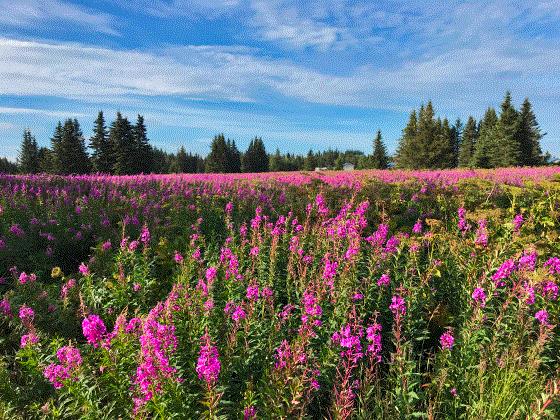
The landscape was lush and green—except where it was hot pink, thanks to all the fireweed (Chamaenerion angustifolium) blooming in the fields and hillsides.

Annuals on steroids
I had always heard that Alaska’s flora grows big, beautiful and bountiful, and it’s true! All around the towns we visited (Anchorage, Homer, Haines, Juneau and Ketchikan), we saw absolutely spectacular pots and baskets of annuals.
You see, the season in Alaska, especially the southern portion where we were, isn’t much different than much of the upper U.S.: Growers fire up their greenhouses in February and March (the later the better, due to heating fuel costs) and sales start by May 15 or sooner, if the weather breaks, and I’m told cabin fever has folks out shopping like mad. Of course, we visited in early August, and by then sales seemed done—we visited four garden centers and I didn’t see much sign of a vigorous summer annuals business. By the end of September, the season is over.
The big difference is light—both duration and intensity: With upwards of 19 hours of daylight at the solstice where we visited (more the farther north you go), plants grow like they’re on steroids. They were big, and their flowers were big, too. And thanks to mild temperatures, we saw spring annuals like pansies, alyssum and nemesia alongside the warm-weather staples, and all of them looking fabulous. Here are a few examples:
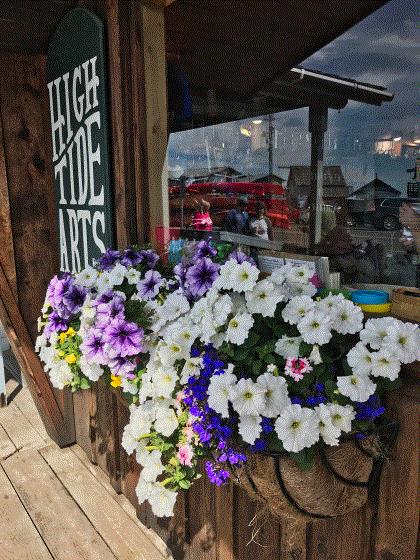
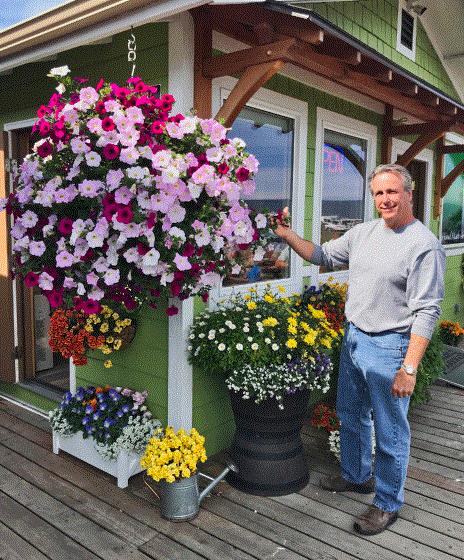
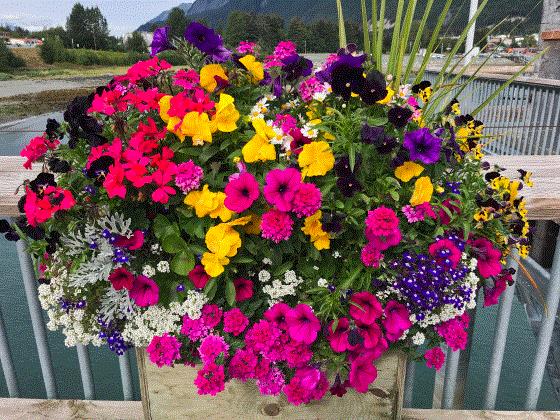
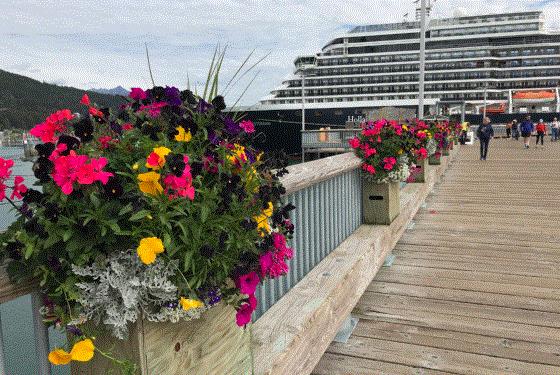 That's my boat in the background. Well, I don't own it ... although when I paid the cruise bill it felt like I'd just made a down payment on it.
That's my boat in the background. Well, I don't own it ... although when I paid the cruise bill it felt like I'd just made a down payment on it.

Green Connection
Green Connection, a 40-year-old business in Anchorage, specializes in interiorscaping, commercial plant rentals and landscaping.
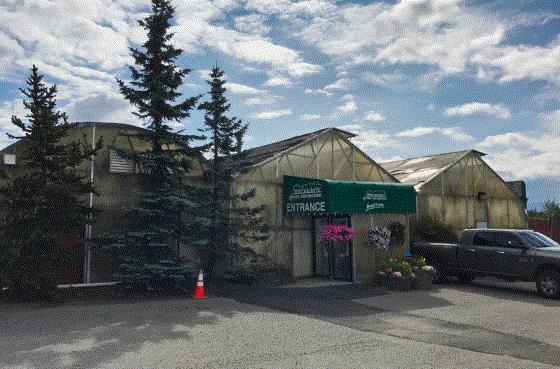
Their retail outlet is primarily a houseplant store, and a good one! Laurie, my personal foliage expert, was impressed with both the selection and the quality of the offerings, which they bring in from Florida or wherever else they can find what they need. Plants we saw looked fresh from the truck, but nope, we were told by Sales Manager Sarah Small (pictured) that they’d been in stock a while.
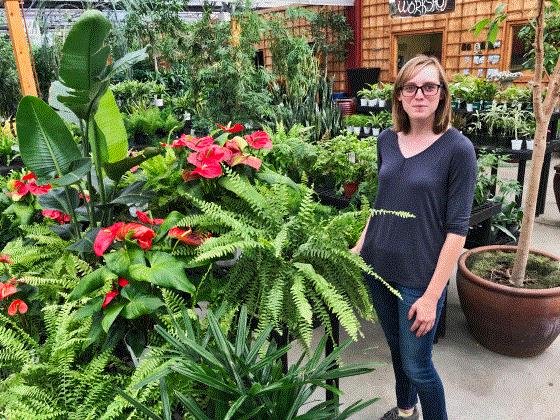
A couple of fun things:
On the door they’d posted this sign:
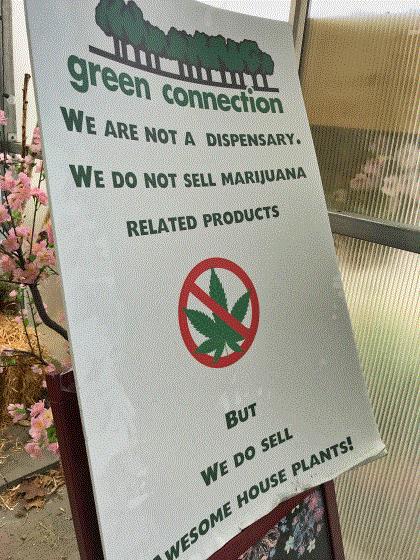
Why? Cannabis is legal in Alaska, and with a name like Green Connection, well, folks often assume they sell a different sort of plant. I like that they point out that they sell “awesome house plants.” No doubt it encourages a few cannabis hunters to come on in.

This might be the best display of product literature I’ve ever seen. Each sheet contains scientific name, common names, origin, light requirement, water requirement and “aftercare.”
This little sign, promoting pots, made me smile:


Bell’s Nursery & Gifts
Across town, we found one of Bell’s Nursery’s three locations.
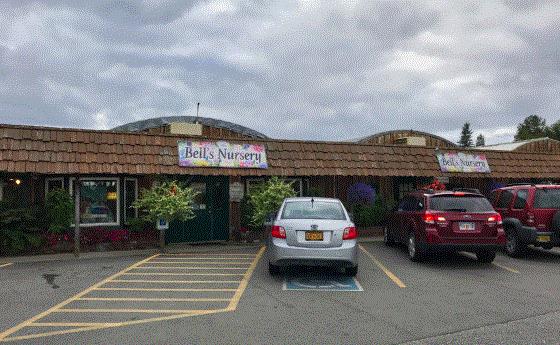
Inside, we didn’t find lots of plants; in fact, one bay had been converted to hydroponic tomatoes, something they apparently grow a lot of, and cucumbers, too—their website claims they produce 100 tons of tomatoes a year. But what we did find was an amazing selection of big-name home and kitchen wares, from Le Creuset and Waterford to Henckels and Riedel.
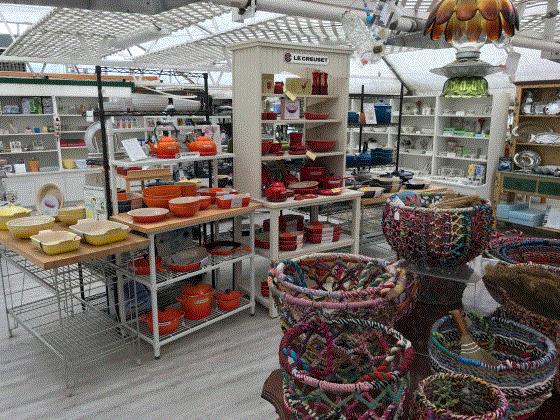
They’ve got a tidy little espresso bar, too (coffee is as important in Alaska as it is in Seattle, apparently; we saw small drive-up espresso shops everywhere).
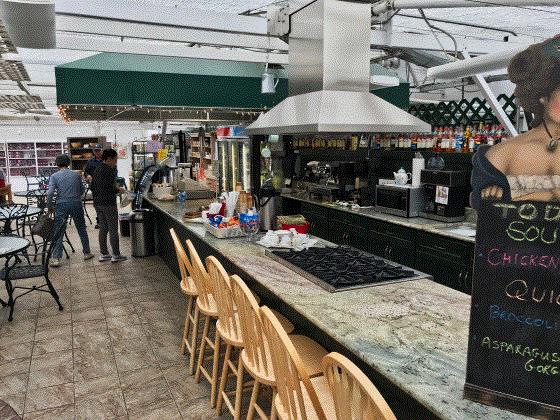
While the facilities weren’t fancy, the products and merchandising were quite nice; they must draw in a good customer base by stocking brands that are hard to find in the region. Impressive!
Dinner among the peonies
The main purpose of my trip was to attend the most far-flung of the Certified American-Grown “Field to Vase” dinners, held at Joslyn Peonies, a hilltop home and farm in Homer, Alaska, overlooking Kachemak Bay and the Kenai Mountains, about four hours southwest of Anchorage on the Kenai Peninsula. That’s a long-winded way to say “here:”
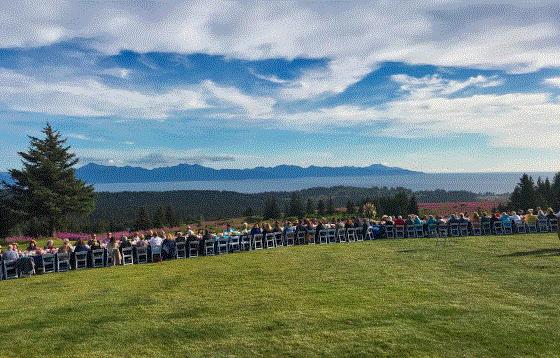
Spectacular, eh?
The August 3 event was hosted by “Farmer” Betty Joslyn and her husband, Tony, 45-year Alaskan “sourdoughs” (those who live in Alaska year-round).
The event included a farm tour, reception and seafood dinner (sponsored in part by the Alaska Seafood Marketing Institute, so you know the oysters and salmon were fresh).
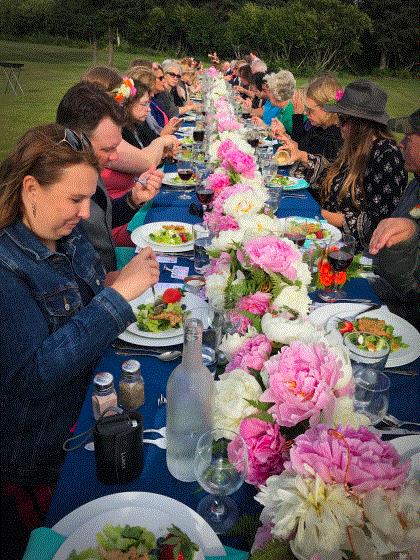
On the long, long table that seated some 170 guests were 2,000 peonies arranged by Christi Lopez of Bergerons Flowers & Events. Also in attendance? Oh, just a few important people, such as Alaska senator Lisa Murkowski, Homer mayor Ken Castner and National Agricultural Statistics Service (NASS) administrator Hubert Hamer, top man at the USDA agency (I sat next to him at dinner). Quite a do for little Homer!

Peonies (continued)
Joslyn Peonies is one of about 150 or so peony farms in the state, an industry that's just 15 years old. It came about when Patricia Holloway, a University of Alaska horticulturist, noted that the state’s peonies bloomed weeks or even months later than those in other parts of the world. That would give Alaska an edge in late peonies for summer weddings and events. Now Alaska peonies are becoming known world-wide.
Betty is pretty new to the industry, having planted her first peonies in 2012 and making her first harvest about three years ago. She farms 6,000 of the perennials, tending them carefully to get the most flowers possible during the frantic three-week harvest. Like most farmers, she sells via a cooperative that helps market the product.
But it’s not always smooth sailing, and the young industry faced some challenges this season, with the drought and heat wave bringing the crop in way earlier than desired. We were told that Vermont peonies came in later than Alaska’s.
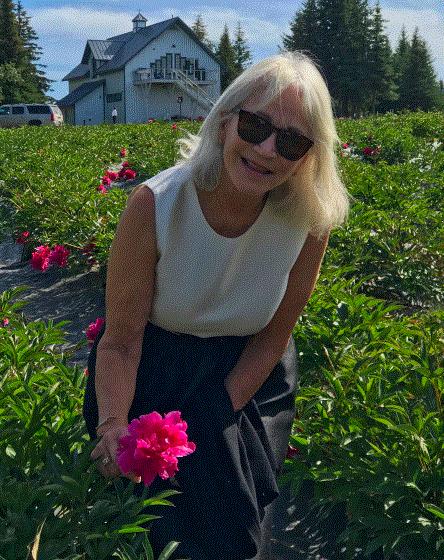
Betty with the variety Felix Supreme.

Peonies (part 3)
Peony grower David Russell, PhD and his wife, Jill, were across the table from me. They’re both professors from Ohio who fell in love with Alaska, eventually moving there to teach at the university. A colleague was growing peonies successfully and convinced them to give them a try. After some research, they bought an old hay farm and Boreal Peonies was born. They do both peony production and—because they’re scientists—peony research on the farm. David is also president of the Alaska Peony Growers Association. I asked him about the outlook for Alaska’s young peony industry.
“I believe we can become world players,” he said. But he added that climate change and technology could make it a challenge. As demonstrated this season, it doesn’t take much heat to bring the crop in early, erasing their advantage. Plus, the Dutch are apparently working on storage techniques for peony flowers that would allow them to hold them for later sales.
Still, one advantage is Alaska itself. David said he did a sale of peonies to a major UK grocery chain specifically because they come from Alaska.—Chris Beytes

The farmers’ market, and more flowers
The steroid-like powers of the Alaskan growing season were evident at the Homer Farmers’ Market, just off the world-famous Homer Spit:
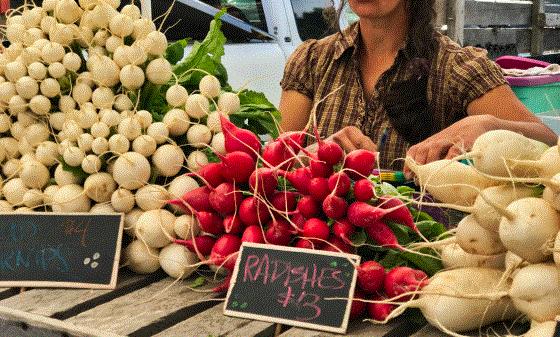
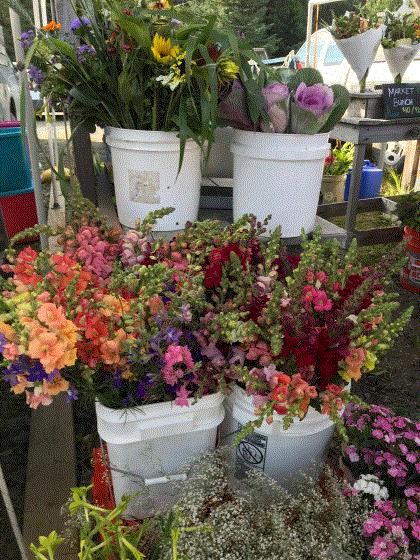
Two flowers we spotted at Wagon Wheel Garden & Pet in Homer. First, a species of primula that was new to me: Primula vialii. Common names include Chinese pagoda primrose, orchid primrose and Vial’s primrose. Note the upright foliage and interesting flower spike that’s more like a kniphofia than a primula. As most of the literature I found online tended to come from UK sources, it may be better known there than the U.S.
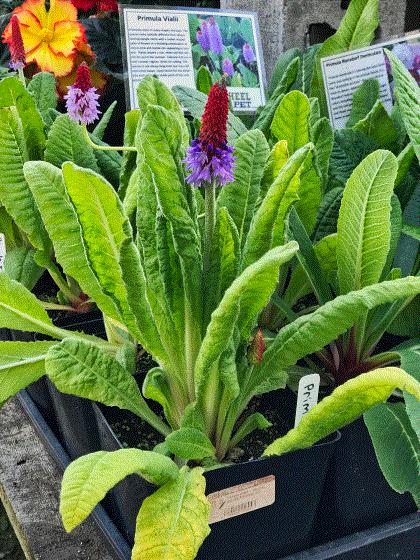
Second, one you already know: Petunia Headliner Night Sky from Selecta One. What struck me is how spectacular the coloration was, no doubt due to Alaska’s unique climate. This is what Night Sky can look like!
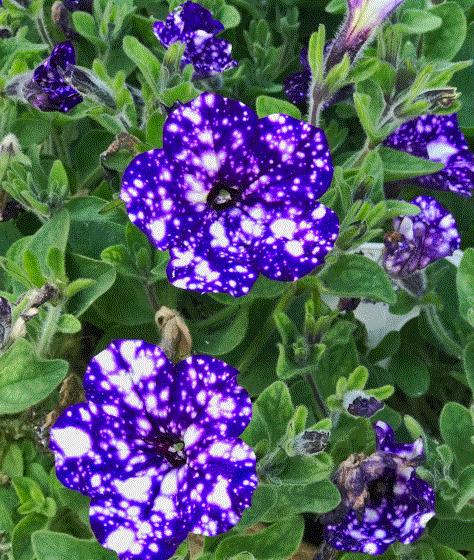
Finally ...
Next time, we'll get back to the hardcore industry news. But for now, I’ll leave you with one last idea from Alaska: How Bear Creek Winery in Homer crafted a Kevin the Minion from an old propane tank:

See you next time,

Chris Beytes
Editor
GrowerTalks and Green Profit
This e-mail received by 23,726 loyal readers!
Thanks to my loyal sponsors, who help me reach the 23,726 readers of Acres Online in 66 countries. Want to be one of them (a sponsor, that is)? Give Paul Black a shout and he'll hook you up.